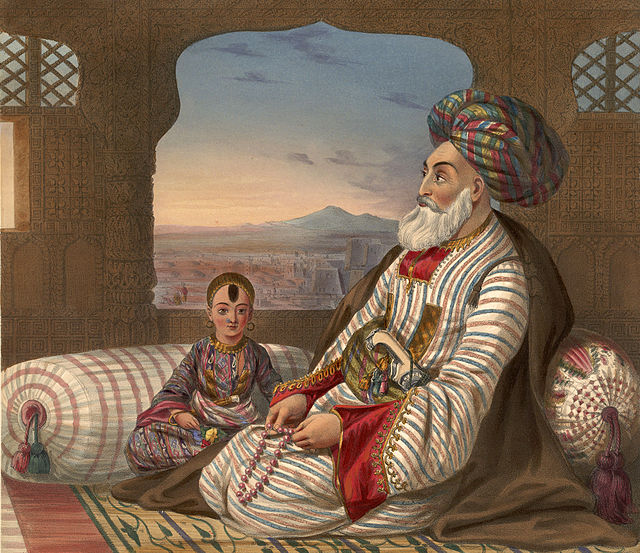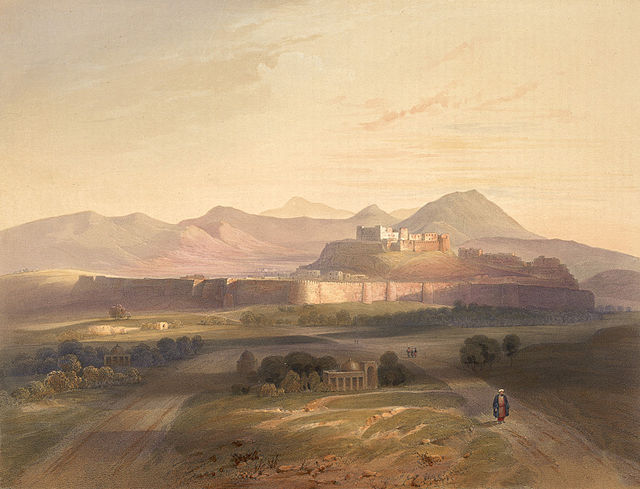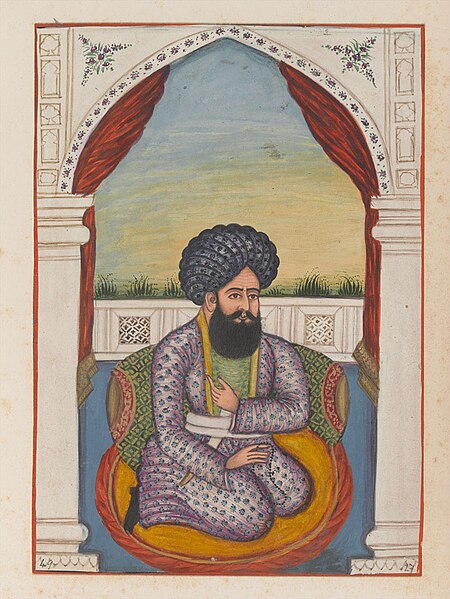European influence in Afghanistan
European influence in Afghanistan has been present in the country since the Victorian era, when the competing imperial powers of Britain and Russia contested for control over Afghanistan as part of the Great Game.
King Dost Mohammad Khan with one of his sons.
Ghazni in early 1800s.
Prince Akbar Khan, son of Dost Mohammad Khan.
Shah Shujah became the last Durrani ruler, who first reigned between 1803 and 1809, and again from 1839 to 1842.
The Barakzai dynasty also known as the Muhammadzai dynasty ruled modern day Afghanistan from 1823 to 1978 when the monarchy ended de jure under Musahiban Mohammad Zahir Shah and de facto under his cousin Sardar Mohammad Daoud Khan. The Barakzai dynasty was established by Dost Mohammad Khan after the Durrani dynasty of Ahmad Shah Durrani was removed from power.
As the Pahlavi era in Iran, the Muhammadzai era was known for its progressivist modernity in which Afghanistan was referred to as the "Switzerland of Asia".
Emir Habibullah Khan, member of the Seraj cadet branch and Emir of Afghanistan
HRH Field Marshal Prince Abdul Aziz Khan Telai. Minister of war and interior affairs under his grand-nephew King Amanullah Khan. Mentor and predecessor as minister of his other grand-nephew King Nadir Shah.
Loynab Shir Dil Khan Shaghasi' son of Shaghasi Mirdaad Khan Barakzai, grand son of Bazar Khan Barakzai, and great-grandson of Sardar Yasin Khan Barakzai. Işik Aqasi (Minister of the Royal Court "Chemberlain") to Dost Mohammad Khan 1856, and Sher Ali Khan. Regional Sardar, Governor of Turkistan and Balkh, and the first and only Loynaad of Afghanistan during the Barakzai dynasty.
Image: Sultan Mohammad Khan. Watercolour by a Company artist, Punjab, ca.1865








